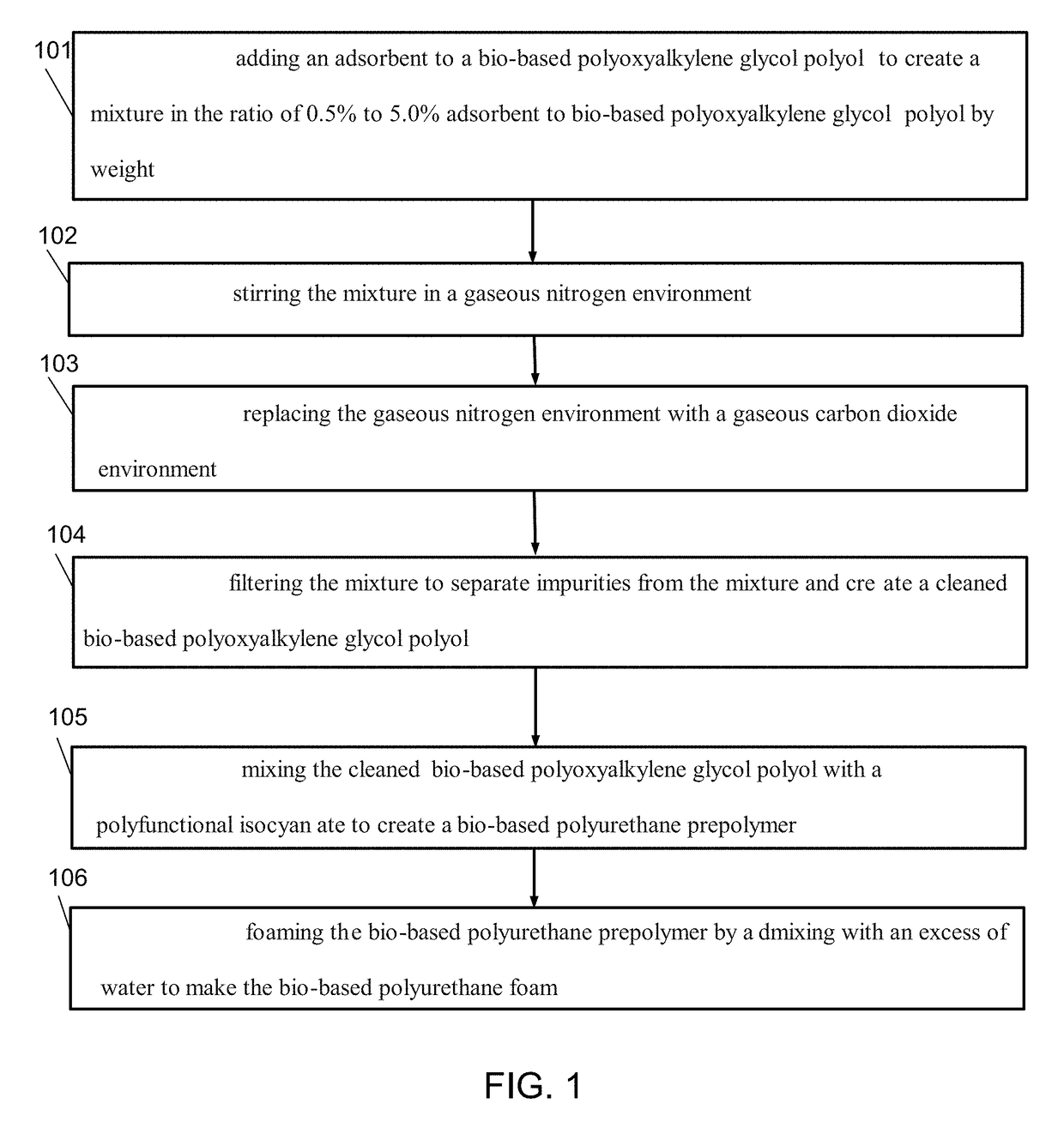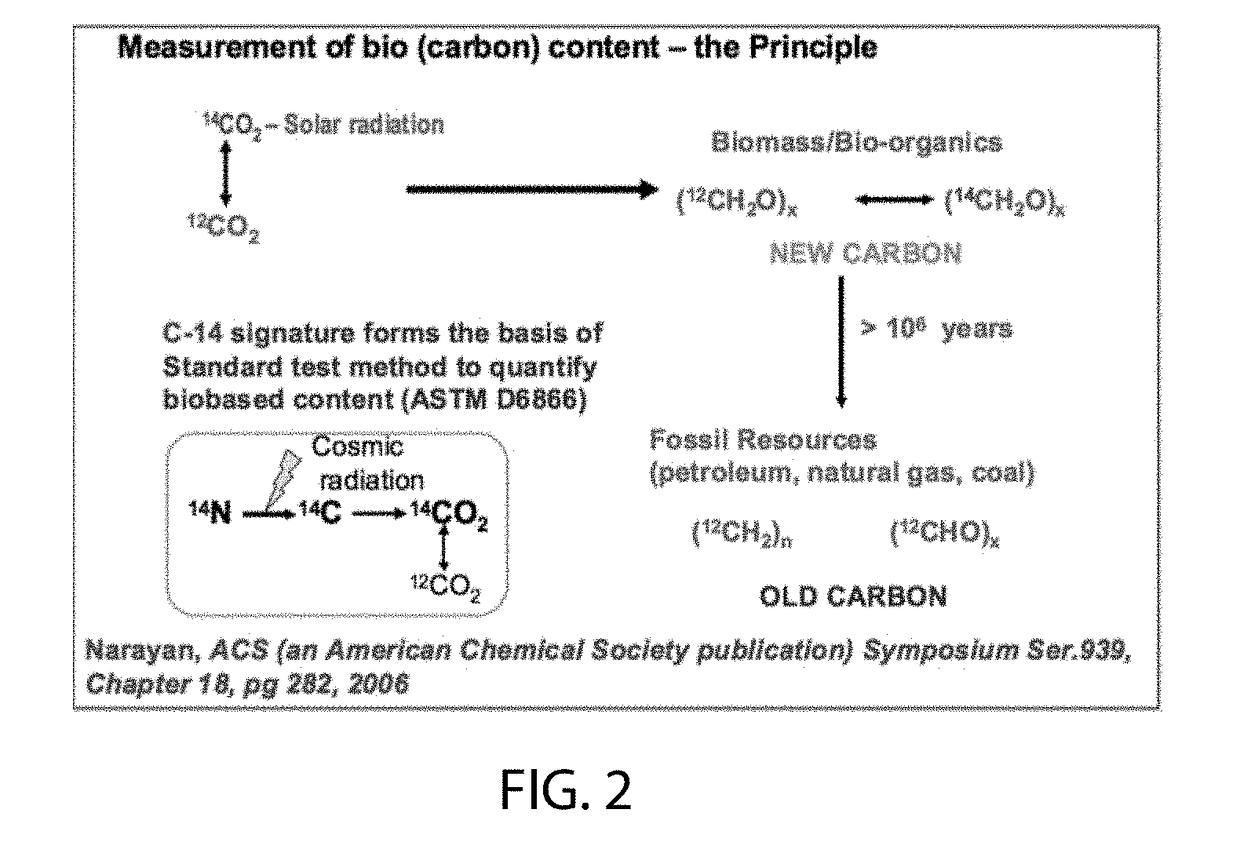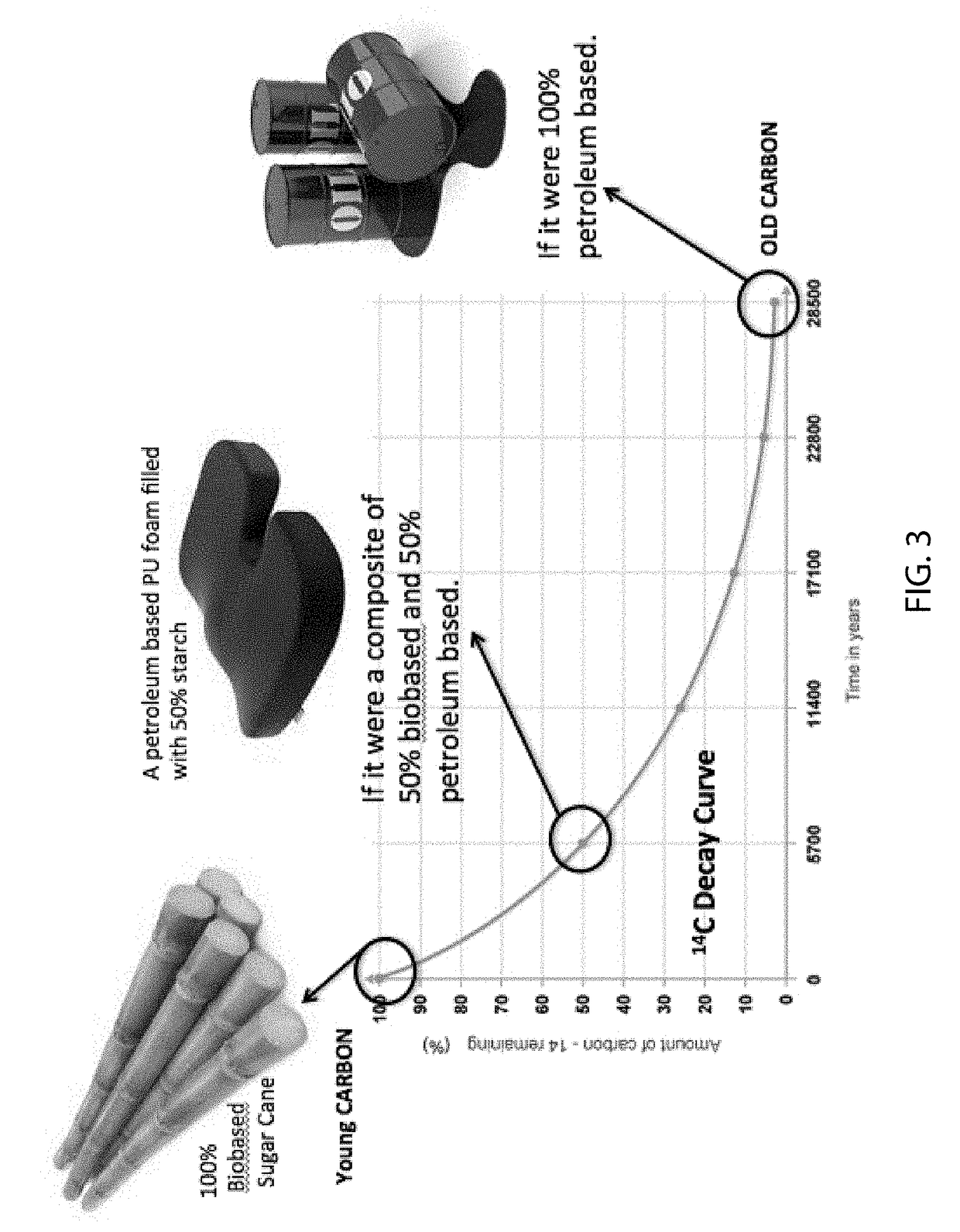Bio-based and hydrophilic polyurethane prepolymer and foam made therefrom
a technology of hydrophilic polyurethane and bio-based polyurethane, which is applied in the field of bio-based hydrophilic polyurethane prepolymers and polyurethane foams, can solve the problems of higher cost of petrochemicals and petroleum derived products compared to their bio-based analogs, and achieve low production cost and high degree of reactivity
- Summary
- Abstract
- Description
- Claims
- Application Information
AI Technical Summary
Benefits of technology
Problems solved by technology
Method used
Image
Examples
example # 1
Example #1
[0050]The adsorbents which can be employed in the practice of this invention are synthetic magnesium silicate adsorbents. They may be prepared by the reaction of a magnesium salt such as magnesium sulfate with sodium silicate. The typical resulting products can have particle sizes ranging from 100 to 500 microns with an average particle size of about 325 microns. These adsorbents are sold under trademarks “MAGNESOL” by The Dallas Group or “AMBOSOL” by the PQ Corporation. The amount of adsorbent which was employed depends on the concentration of catalyst present in the polyol. Thus, amounts ranging from about 0.5 percent to about 5 percent by weight based on the weight of the polyol may be employed. Preferably, however, the concentration of adsorbent ranges from about 1.0 percent to about 3.0 percent based on the weight of polyol. More preferably, the concentration of adsorbent ranges from about 1.0 to about 2.0 weight percent based on the weight of the polyol. From an econ...
example # 2
Example #2
[0055]A bioprepolymer was prepared by admixing 0.134 molar equivalents of biobased polyethylene glycol having an average molecular weight of 1,000 (PEG—1,000) and 0.046 molar equivalent of Glycerine (GLY). The mixture was slowly added over a period of about one hour to a vessel containing 0.346 molar equivalents of 80 / 20 toluene diisocyanate (TDI) while stirring the TDI and polyol mixture. The temperature was maintained at 70° C. with stirring for three additional hours. All hydroxyl groups were capped with isocyanate and some chain extension occurred because of crosslinking of the polyols with TDI. The resultant biobased prepolymer has a theoretical NCO % of 7.12% with a titrated (ASTM D3574) NCO % of 7.03. Hydrophilic foams have been prepared from the above prepolymer using large amounts of water as described previously. These foams exhibit good physical properties, and various materials can be incorporated into the aqueous phase when preparing the foams.
example # 3
Example #3
[0056]A mixture of 304.4 g TDI and 0.34 g of benzoyl chloride was admixed at 70° C. during 3 h with 675.1 g of a biopolyethylene glycol having a molar mass of 1000 g / mole containing 20.5 g Trimethyloyl propane (TMP). To the polyol blend was added 400 ppm BHT with stirring followed by dropwise addition and subsequently stirred for 3 hours. This gave a prepolymer having a theoretical NCO content of 7.08% and a viscosity of 12,000 mPas at 25 C.
PUM
| Property | Measurement | Unit |
|---|---|---|
| molar ratio | aaaaa | aaaaa |
| particle size | aaaaa | aaaaa |
| particle size | aaaaa | aaaaa |
Abstract
Description
Claims
Application Information
 Login to View More
Login to View More - R&D
- Intellectual Property
- Life Sciences
- Materials
- Tech Scout
- Unparalleled Data Quality
- Higher Quality Content
- 60% Fewer Hallucinations
Browse by: Latest US Patents, China's latest patents, Technical Efficacy Thesaurus, Application Domain, Technology Topic, Popular Technical Reports.
© 2025 PatSnap. All rights reserved.Legal|Privacy policy|Modern Slavery Act Transparency Statement|Sitemap|About US| Contact US: help@patsnap.com



